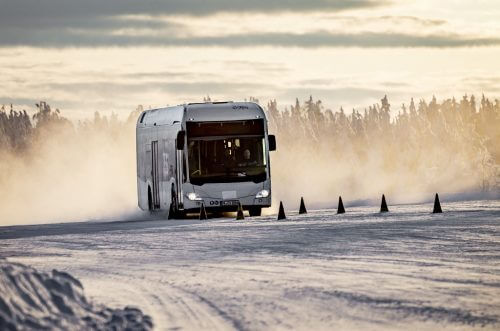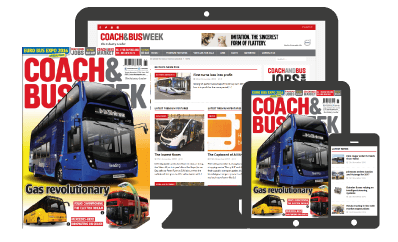 Daimler Buses has unveiled its first phase all-electric Mercedes-Benz Citaro. As Andy Izatt reports, it’s part of a measured, two-pronged response to growing political and social pressure for emissions-free transport
Daimler Buses has unveiled its first phase all-electric Mercedes-Benz Citaro. As Andy Izatt reports, it’s part of a measured, two-pronged response to growing political and social pressure for emissions-free transport
In preparation for the public debut of the phase one version of the 12m left-hand drive Mercedes-Benz Citaro all-electric at IAA Commercial Vehicles, Hanover in September, Daimler Buses has given this important new addition to its product range its trade press launch. Right-hand drive will be available in two years, by which time a significantly greater capacity battery pack is anticipated (second phase) and articulated versions of the vehicle will also be introduced.
“Indications of operating range for all-electric powered city buses are often difficult to compare and caution is advised, since reference values can be missing and the figures have often been calculated under ideal conditions,” says Daimler Buses. “In the interests of reliable data, Mercedes-Benz prefers to consider a ‘worst-case scenario’ and therefore takes its direction from the challenging ‘Standardised On-Road Test cycle (SORT2). Mercedes-Benz also adds the energy requirements of the ancillary consumers into the equation. According to SORT2, the Citaro with a full complement of batteries can achieve an operating range of around 150km in the summer.”
By the time series production starts, a dozen prototypes will have completed a gruelling, comprehensive evaluation programme that has included trials at below minus 15 degrees Celsius in the Arctic Circle and at more than 30 degrees Celsius in the Sierra Nevada mountains of Spain. All components will have been tested individually and once integrated both under laboratory conditions and in the field.
“It’s built on the platform of the proven Citaro, which provides an excellent basis for the powertrains of today and tomorrow,” explained Gustav Tuschen, Head of Product Engineering, Daimler Buses. “The layout of the passenger compartment remains the same. This means no change for transport operators or passengers. We use the electrically powered rear axle with wheel hub motors already proven in our buses. Modular battery packs are installed on the centre of the roof, and in the rear. As standard, the bus is charged at the depot via a Combo 2 connector. On the road it can be optionally charged by means of an on-board or stationary pantograph.” […]
By subscribing you will benefit from:
- Operator & Supplier Profiles
- Face-to-Face Interviews
- Lastest News
- Test Drives and Reviews
- Legal Updates
- Route Focus
- Industry Insider Opinions
- Passenger Perspective
- Vehicle Launches
- and much more!


